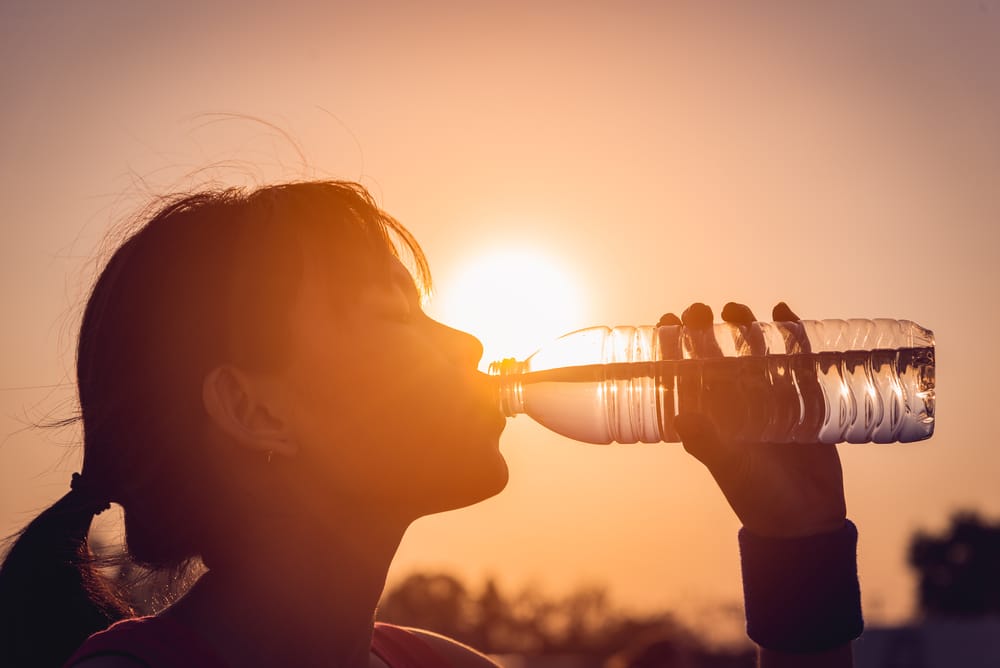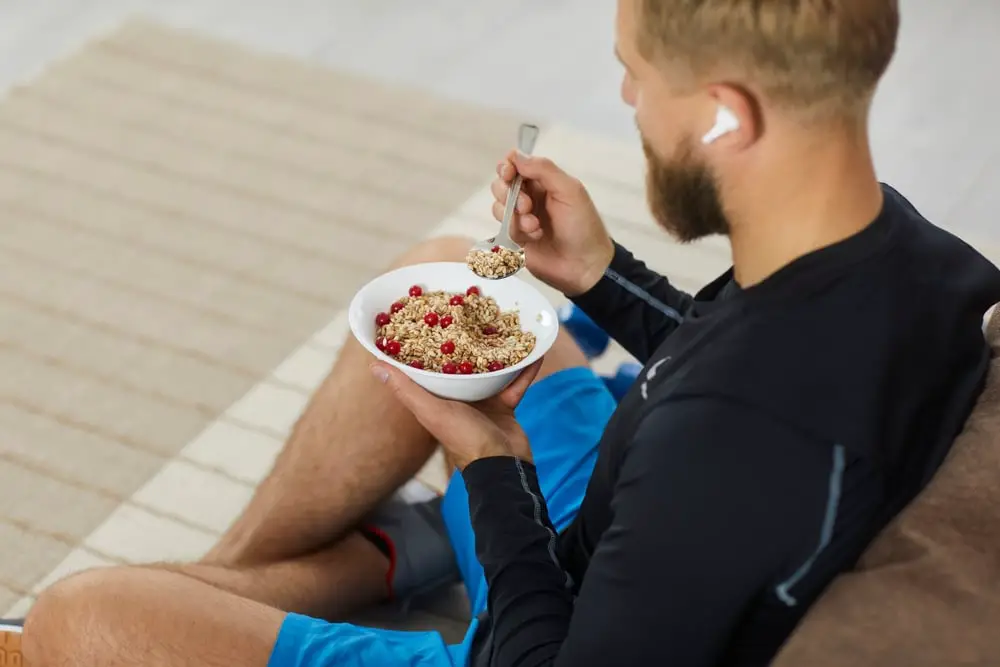
The heat can make your runs feel twice as hard as they usually are. However, if you live somewhere with hot summers and want to continue running during that time of year, you need to find ways to deal with the heat and manage your body temperature during your runs.
Luckily, there are several things that you can do to run better and safely in hot weather. Keep reading to find out what they are and how to withstand running in the heat to not put a dent in your routine.
Quick Navigation
1. Stay Hydrated
The most important tip for running in the heat is to stay hydrated.
You should always stay extra hydrated during the hot summer heat, but it’s even more critical if you choose to run in that weather. This means drinking fluids before, during, and after your run.
Keep a water bottle holder with a strap with you throughout your run, especially if you tend to go for long runs. Better yet, drink a sports drink to replace the salt and electrolytes you lose during long runs.
As for how much water you should drink, the rule is simple: if you feel thirsty, take a drink. If you keep your body hydrated, you’ll be able to avoid heat disorders much more easily.
2. Wear the Right Clothes
The clothing you wear when running in the heat will make or break your experience.
This isn’t the time to wear a form-fitting black tracksuit for your run. Tight clothes won’t let your body breathe and cool itself down, and dark clothing absorbs sunlight, making you even warmer.
You should opt for light-colored, loose-fitting clothing for runs in the heat. You should also pay close attention to the fabric of your clothing. Choose material that wicks away moisture from your skin, such as synthetic fabrics, and stay away from ones that absorb moisture, such as cotton.
Finally, if you want to wear something to block the sun, you should opt for a visor rather than a hat, as a hat will block the heat into your head and cause you to overheat sooner.
3. Run When the Sun Is the Lowest
One of the top tips for running in the heat is being smart about when you run.
A hot summer day is not the time to go on a lunchtime run. With the sun so high in the afternoon, the weather is the hottest, making it the most challenging time to run.
Instead, you should try to run at the points in the day where the sun is the lowest – sunrise or sunset. Unfortunately, due to the long length of summer days, that usually means early mornings or late at night.
That said, waking up early for an early morning run is your best bet, as that’s the coolest time of the day. Just be sure to take extra safety precautions when running during this time, as there probably won’t be many people on the roads. Don’t wear headphones, and stay aware of your surroundings.

4. Wear Sunscreen
Protecting your skin is just as important as staying hydrated during your runs. In the heat, the signs of sunburn can happen in as little as 11 minutes, which is more than enough time for you to get sunburnt during a run. Moreover, even if it’s cloudy, you can still experience sunburn.
Depending on the length of your run, you want to wear sunscreen that is at least SPF 15, but preferably higher. Your sunscreen should protect against both UVA and UVB rays.
Don’t forget to apply sunscreen to your face. However, you’ll want to choose a sunscreen that doesn’t run into your eyes while you run.
5. Adjust Your Pace
While running in the heat is possible, it may not be possible for you to run at your usual pace.
Training in hot temperatures will require you to adjust your pace to ensure you don’t deplete your oxygen too quickly and tire out. You should add a few seconds to your usual mileage as the temperature increases so as not to burn out too quickly.
Not only is burning out not conducive to a good run, but it can also be bad for your health and cause heat exhaustion.

6. Take in More Carbs
When running in the heat, it’s crucial to load up on enough carbs to give you extra energy for running. Your body uses more carbs when running in the heat, so you will need the extra boost.
Your body is pumping more blood to your extremities than your stomach, so you need to take in fuel that’s easy to digest to avoid any stomach problems while you’re running.
7. Know When to Stop Running
Summer running or running in hot conditions isn’t always a good idea. Knowing when to stop running or skip your run is essential. If your area has a major high temperature warning, it may not be a good idea to go outside for your run. Too much heat exposure can cause many problems, including heat cramps, dehydration, heat stress, and heat illness. If your core body temperature gets too high, you can quickly develop a heat-related illness which can be a medical emergency.
Instead, consider cross training indoors on a hot day. You can also hit up your local gym for a run on a treadmill to ensure you still get your training.
Recap: How to Handle Running in the Heat
To recap, running in the heat requires you to:
- Stay hydrated with cold water or a sports drink.
- Wear the proper clothing.
- Run early in the morning or at night.
- Wear sunscreen.
- Adjust your pace.
- Take in more carbs.
Finally, if you find it genuinely too hot of a day to run, give yourself a break. It isn’t worth risking heat stroke or another heat-related illness for one day of running. Wait for a cooler temperature to get your long run in.
Running in the heat is challenging but doable. You might even become a better runner because of it.
